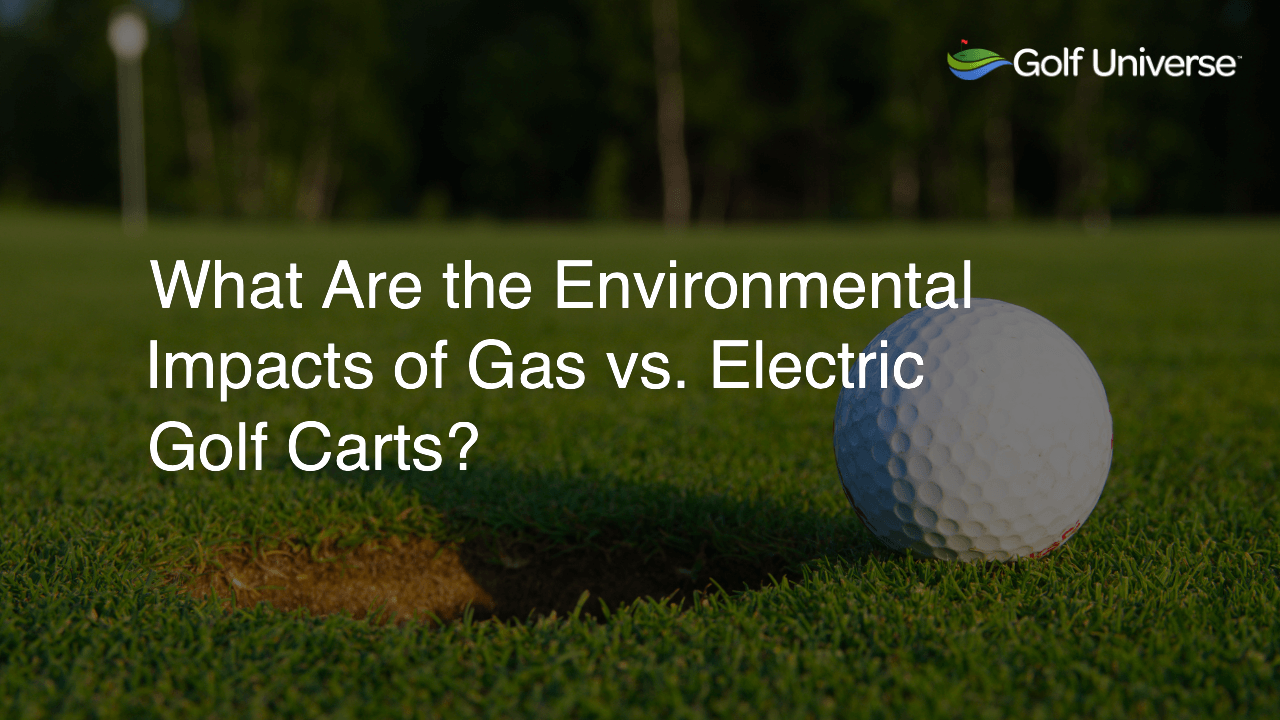Gas golf carts emit greenhouse gases and contribute to air and noise pollution, while electric golf carts produce no exhaust emissions and are quieter. However, electric golf carts rely on electricity, which may be generated through non-renewable sources. Additionally, battery production for electric carts can have environmental impacts. Overall, electric golf carts are generally more eco-friendly than gas-powered carts but also depend on responsible battery disposal and clean energy sources to minimize their environmental footprint.
Gas Golf Carts: Greenhouse Gas Emissions and Noise Pollution
Gas-powered golf carts run on internal combustion engines, burning fossil fuels to generate power. This process results in the emission of greenhouse gases, such as carbon dioxide, which contributes to global warming and climate change.
Additionally, gas-powered golf carts produce air pollution in the form of volatile organic compounds (VOCs) and nitrogen oxides (NOx), which can have negative effects on air quality and human health.
Another environmental downside to gas golf carts is noise pollution. The internal combustion engines produce a louder and less pleasant sound compared to electric golf carts, which can impact the enjoyment of the game for players and disturb wildlife living near golf courses.
Electric Golf Carts: Clean Operation with Drawbacks in Energy Production and Battery Disposal
Electric golf carts are powered by rechargeable batteries and produce zero exhaust emissions, making them an environmentally cleaner option than gas golf carts. They also run much quieter, reducing noise pollution on and around the golf course.
Energy Production for Electric Golf Carts
Although electric golf carts themselves do not emit greenhouse gases, they rely on electricity generated through various sources, some of which are non-renewable and can have their own environmental impacts. If the electricity used to charge electric golf carts comes from fossil fuel-fired power plants, the overall carbon footprint of electric golf carts could still be significant.
Battery Production and Disposal
Electric golf carts rely on lithium-ion or lead-acid batteries, the production of which can have environmental consequences. Mining for lithium or lead can lead to deforestation, loss of biodiversity, and water pollution. Additionally, improper disposal of used batteries can result in the release of toxic chemicals into the environment.
To minimize the environmental impact of electric golf carts, it’s essential to recycle batteries responsibly and, where possible, utilize clean energy sources for charging.
Green Golf Courses: A Growing Trend
As the golfing community becomes more concerned with the environment, many golf courses have started to embrace sustainable practices to minimize their environmental impact. A few of these practices include efficient water management, creating natural habitats, and reducing chemical use. This trend towards greener golf courses aligns with the environmental advantages of electric golf carts, making them an ideal choice for eco-friendly golfers.
Golf Universe’s Take on the Gas vs. Electric Debate
At Golf Universe, we’re passionate about the sport of golf and fostering a sustainable environment for future generations. We believe that the benefits of electric golf carts – such as zero emissions, quiet operation, and reduced air pollution – make them a more environmentally friendly choice. However, it’s essential to consider responsible battery disposal and the use of clean energy sources for charging to minimize electric golf carts’ overall environmental impact.
Golf Universe’s Recommendation: Solar-Powered Charging Stations
One way Golf Universe recommends minimizing the footprint of electric golf carts is by installing solar-powered charging stations at golf courses. Relying on renewable energy like solar power for charging electric golf carts lowers their carbon footprint and promotes even cleaner operations.
Contribute to a Greener Golf Experience with Golf Universe
Through our blog, Golf Universe aims to provide golfers with valuable information to make informed choices about their golf equipment and gear, with a focus on sustainability. We encourage golfers to consider not only the performance aspects of their golf carts but also the environmental impact that comes with each choice. By choosing electric golf carts and promoting sustainable practices on the golf course, golfers can enjoy their favorite sport while contributing to a healthier planet.
Frequently Asked Questions (FAQs)
In this section, we’ve gathered some frequently asked questions related to the environmental impacts of gas vs. electric golf carts to help you stay well-informed and address any further concerns.
Are electric golf carts more expensive than gas golf carts?
While electric golf carts may have a slightly higher upfront cost, their lower operating and maintenance costs can offset the initial investment over time. Additionally, savings on fuel expenses make electric golf carts an economically more prudent choice in the long run.
What is the lifespan of electric golf cart batteries, and how often do they need replacement?
Electric golf cart batteries typically last for 5 to 7 years, depending on usage and maintenance. Proper care, such as ensuring consistent charging and avoiding over-discharging, can prolong battery life. Replacement intervals may vary based on the specific battery type and the quality of maintenance the cart receives.
How can I ensure proper battery disposal and recycling for my electric golf cart?
Many battery manufacturers, automotive recycling centers, and retailers offer battery recycling programs, accepting used golf cart batteries for disposal. Contact local recycling facilities or check with the retailer where you purchased your batteries to find the best recycling options available.
How long does it take to charge an electric golf cart, and can I charge it at home?
Charging times for electric golf carts may vary based on battery capacity and charger capabilities, but a full charge generally takes between 4 to 8 hours. Charging at home is possible using a standard electrical outlet, although installing a dedicated circuit for charging may provide added convenience and safety.
Can I convert my existing gas golf cart into an electric one?
Yes, converting a gas golf cart to an electric one is possible, though it may require significant modifications and can be a complex and time-consuming process. It involves replacing the gas engine with an electric motor, installing batteries and controllers, and rewiring the cart. Consulting with a professional conversion company or an experienced technician is recommended if you decide to convert your cart.











